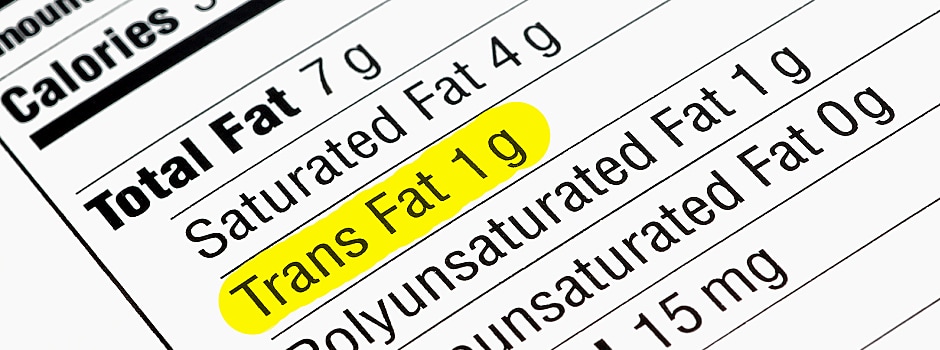You may have heard that foods with trans fat are particularly bad for you, but to what extent? What happens in the body when you eat foods containing trans fat? Where does trans fat come from and what foods can you expect to find them in? Here's what you should know about these fats.
What Are Trans Fats?
The majority of trans fats aren't naturally occurring, and little was known about their health effects before 1990. Trans fats are made through a process called hydrogenation, which takes an unsaturated fat and treats it with hydrogen, transforming it into a saturated fat. This practice allows foods with trans fat to have a longer shelf life. Trans fats also add a desirable texture and taste to processed foods at a lower cost than other less-refined options.
Adverse Health Effects
The hydrogenation process causes trans fats to have negative health effects. When you eat foods made with trans fats, your low-density lipoprotein (bad) cholesterol increases while your high-density lipoprotein (good) cholesterol decreases. In other words, these fats are detrimental to the human body in two different ways. Because of this discovery in the 1990s, trans fats are now called out in product labeling in the United States, and many countries around the world, including Denmark and Switzerland, have regulated its use. The United States Department of Agriculture recommends that Americans try to avoid consuming foods with trans fat in them as much as possible.
Labeling
The majority of processed food packaging will say 0 grams of trans fat per serving. However, the Food and Drug Administration allows companies to label foods with 0.5 grams of trans fat or less per serving as having 0 grams. While 0.5 grams per serving may not seem like a lot, most people rarely eat just one serving of a given food, which proves how much that number can add up without your knowledge.
Foods with Trans Fats
Considering that most trans fats are man-made products that are used as additives, you will most likely only find this type of fat in processed foods. There is a small amount of naturally occurring trans fat in meat and dairy products, but this type of trans fat hasn't been studied in the way manufactured products have and doesn't raise concern for health professionals.
So how can you be sure you're not unknowingly consuming harmful trans fats? If the nutrition label says a food contains 0 grams of trans fat, simply take a look at the ingredient list. If you see the words "hydrogenated" or "partially hydrogenated" in there, then you should be aware that the food does contain some amount of trans fat.
Although you've probably heard the term "trans fat" before, you may or may not have known exactly what it is. Luckily, by knowing the history behind trans fats, their effects on the body, and which foods they can be found in, you can be confident in your abilities to avoid the additive.



